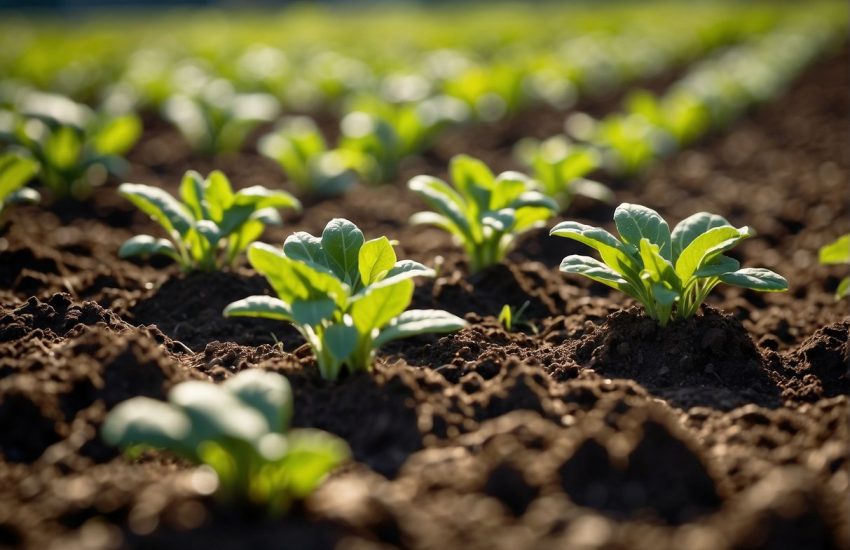What Are The Differences Between Middle Buster Vs. Plow?
A plow is something you use to break the soil. But it is not that simple when it comes to the types of plow or ploughs to use. So, I understand why middle buster vs. plow is such a common question.
How is middle buster different than other plows? Why is it not like other bottom or turner plows? And most importantly, how to pick between middle buster vs plow?
Well, you’re in luck because I have got the answers just for you. Stop looking at those long boring (often toxic) forum threads now! And just give this quick read a go to find all the answers of your questions!
Middle Buster vs. Plow: Quick Comparison Table
There are some differences between Middle Buster vs. Plow, other than the depth of cut. Here’s a one-glace table to satisfy your questioning.
Middle Buster vs. Plow:
| Features | Middle Buster | Bottom Plow |
| Depth of Plow | 12 inch | 7 to 8 inches |
| Engine Power Requirement | 20-25HP/bottom | 30-60 HP |
| Hitch | 3-point hitch | 3-point hitch |
| Material | Steel, carbon steel. | Iron or steel frame |
| Price | $125-200 | $130-200 |
What Are The Difference Between Middle Buster vs. Plow Based on Features?
1. Plowing Performance:
It is the most visible and most prominent difference you will see between the two plowing machines. Any normal plow (bottom or turner plows) will tear the soil up. No questions asked and no mercy! It will do the job rough!
A middle buster is a tractor attachment that attaches to a hitch on the rear of the tractor and is used to make furrows in vegetation. Bottom plows are good for breaking up clay or badly compacted soil and are best used on level ground.
A middle buster plow, famously known as a ‘potato plow’ is a somewhat more gentle. When you run the plow, it drags a gentle line along the middle of the path. And you are left with a nice soft opening for planting seeds, tubers, bulbs, eyes etc.
For a middle buster, you already may need loosened soil. It cannot tear up soil as efficiently as a bottom plow, say for example.
However, if you only use a bottom plow, you will also need to turn the garden with a disc afterward. A bottom plow will make a field rough.
On the other hand, for a middle buster, you can use a different blade to first cut the soil. And I mean really cut it. Then use a disc to level the ground. Finally use the middle plow blade.
Or, you could lay off your rows by using your middle buster. Run your first row, then put your front wheel next to the row you cut and start your next row. This will give you a good amount of space.
So, its better to buy a middle buster and then get some blades. It can serve as multifunctional!
2. Ease of Use and Comfort:
Ease of use depends on the type of usage. But inherently, both are really useful and comfortable machines. Of course, brand-based quality determines which tractor is more comfortable than others. The rich source of blogs in our website should help you with that!
But in general, even a middle plow can function in turning the soil upside down, breaking it down to small pieces. But turning a cow pasture to a vegetable garden with a middle buster will take time.
The land will need to be disked further to make it level and suitable for the next steps. However, a middle buster can be comfortably used as a plow.
3. Price Comparison:
Depending on the brand and specifications, an average middle buster would cost you around $125-150 or $195-200.
On the other hand, the average price for a single bottom 14 or 16 inch point plow ranges from $130-140. And it can reduce to as low as $70 on sale. But some bottom plows can push up to $175-200 on them.
For the price range, a middle buster would be enough for you. If you have tractors, it is good practice to own tractor attachments (if you are gardening). For example, discs, tillers etc.
A middle buster can act in plowing the land just as well. You will need discs to level the ground later.
4. Fuel Usage:
In the common plow depth of 0.2 to 0.25 m, the average fuel consumption is 30 litre/hour. On the other hand, middle busters can take 27-28 gallons per hour.
The engine power and efficiency alternate this value. But assuming you do not have an under-capacity or overcapacity engine, the statistics have been presented to you.
So as you can tell, there is little to no difference between the fuel consumption. What you should look at is the engine power requirements.
5. Engine Power Comparisons:
The typical rule with a plow is 20-35 HP/bottom. Which means a 3 bottom plow will need about 60-75 HP. A 4 wheel drive and the engine running on gas/diesel will also impact the tractor’s capacity to draw power from the plow.
Take the example of JD 2020. It is about 48 HP to the PTO. It runs on gas and is a 2-wheel drive. You cannot work a 2 bottom plow on this one without slowing down.
On the other hand, a Massey Ferguson is 55 HP to the PTO. It is a 3-cylinder 4X4 diesel. A 2 bottom plow will work fine with this HP.
The power requirement for a middle buster is 30-60HP. In a 30HP subsoiler, a middle buster can be attached and plowed.
Any middle buster allows a maximum of 60HP. However, on a 3-point hitch, you can use up to 100HP.
6. Durability and Maintenance:
Sometimes the blade on the middle buster gets bent from a rock. It depends on brand specificity. The CountyLine plow is a reliable one comparatively.
Sometimes, there’s some problem with the leveling arm of the bottom plow. Especially on one or two bottoms. It seems to be pulled all the way up while the plow still runs.
Maintenance regarding a potato plow and normal plow is very regular. Nothing too complex. But yes, the bottom plow does require a keener eye after usage.
Make sure to oil the soil-trenched parts on this one. This will keep it free from rust (yes it is prone to rust).
The rusting on the bottom plow is reported more often than in middle busters. But this depends on the usage and maintenance.
7. Overall Efficiency:
If you have read this far, you can tell that the middle buster seems more efficient than a middle buster. Simply because it can serve the purpose of both. Although being used for tilling and plowing can be hard on the machine.
8. Resell Value:
The resell value for these garden tractor extensions is about as much as you can imagine. However, people are prone to buying a second hand middle buster more than a bottom plow. So a middle buster has more resell value.
Middle Buster or Plow, Which One to Choose?
You know how middle buster serves both purposes (potato plow and normal plowing). However, if you want the satisfaction of breaking that hard soil beneath your machine, you need a strong bottom plow.
It often costs less. And depending on the type of vegetables you are sowing, you may not even need a middle buster.
Moreover, it costs less and requires less engine power as well. So the choice is yours!
FAQs.
Q: How deep can you dig with a middle buster?
Ans: 12 inches.
Q: What is the difference between a moldboard plow and a bottom plow?
Ans: When downing soil, the bottom plow switches between downhill and uphill. Middle busters create a ridge.
Q: How much horsepower is needed for 2 bottom plow?
Ans: 40-50 HP.
Q: Can a 8N pull a 2 bottom plow?
Ans: Yes, easily.
Summary
So you know a lot about these garden tools now. You know how middle busters are alluring but bottom plows do the basic job satisfyingly! Hope you can use this knowledge to make a careful decision on a Middle Buster vs Plow.
Related Posts:


